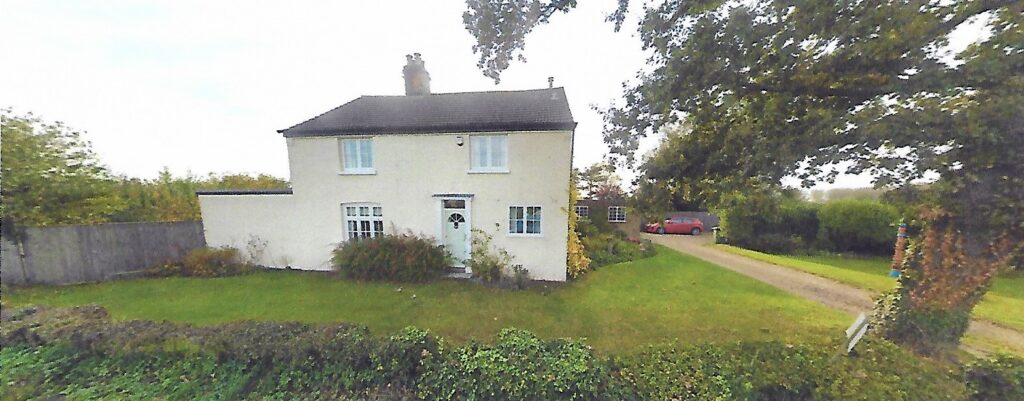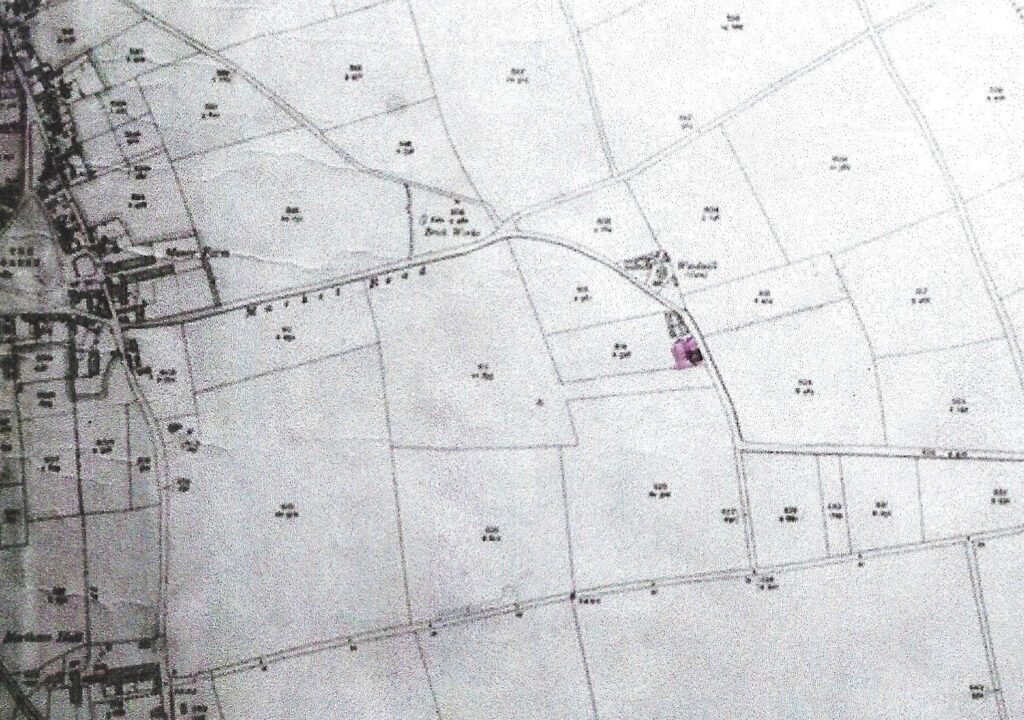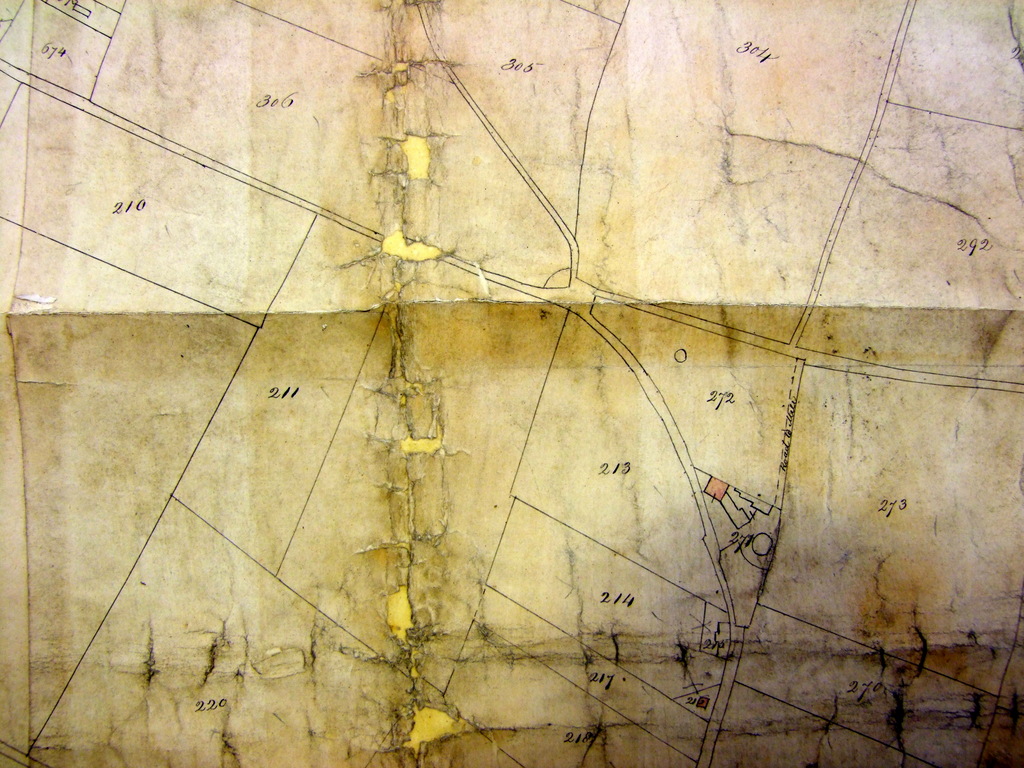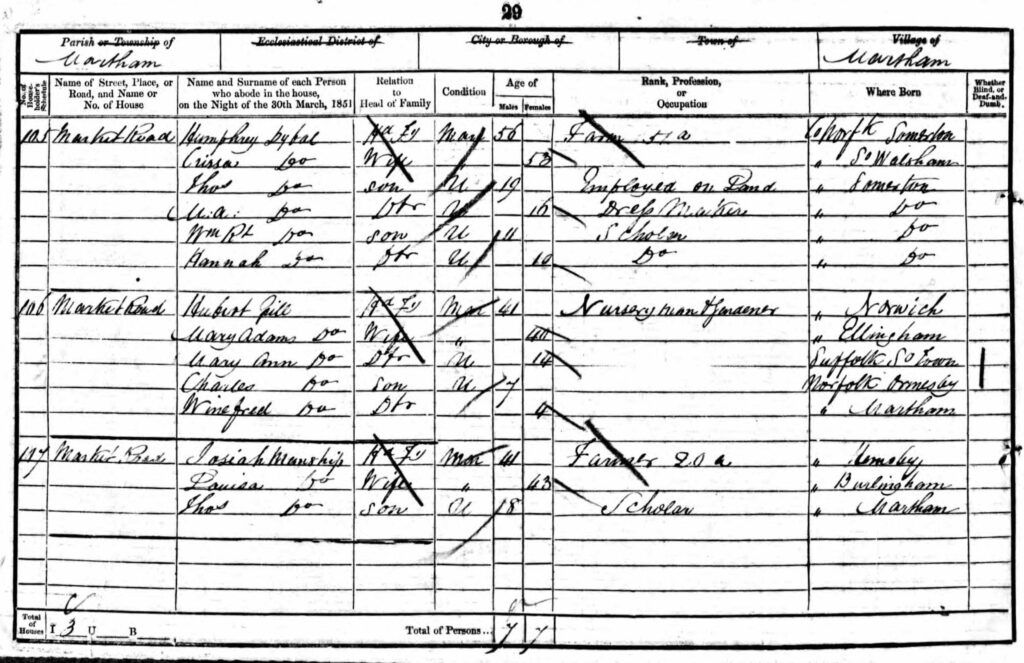Mill Farm House, Hemsby Road, Martham.
Mill Farm House is the relatively modern name given to this house in Hemsby Road that has also been known simply as Mill Farm.

In the 19th and early 20th centuries houses in small villages did not need to be named because everyone knew everyone else and where they lived so trying to establish who has owned or occupied Mill Farm House is not easy. It has never been listed by its full name in census returns. There are some entries under the name Mill House, Hemsby Road but that is a house associated with the windmills across the road and opposite Mill Farm House. To add to the confusion, what we now call Hemsby Road was called Market Road for some time between 1840 and perhaps as long as 1950 but even this is uncertain. Ordnance Survey maps like the one below support this naming, but other sources do not. The 1841 census calls it Hemsby Lane. The 1851 census is the only one that actually calls it Market Road. The 1861 census calls it Hemsby Road, whilst it is not named at all in the 1871 census. In 1881 it was listed as Yarmouth Road. From the 1901 census onwards, it is called Hemsby Road. The census forms are more likely to reflect local knowledge than the national OS maps, which are said to be revised from time to time but are obviously less accurate.

The map above dates to around 1851 confirming that what we know as Hemsby Road was called Market Road at that time. The site of Mill Farm House is shown in red.
The earliest indication of a building on the site is provided on the 1842 Martham Tithe Award. John Palmer was listed as the occupier of plot No 216 described as a cottage and garden measuring only 14 perches (about 72ft x 52ft) that stood on a small corner plot as shown on the 1842 map below. John was a carter who was also listed at the same address in the 1841 census. He later moved to Great Yarmouth. The owner of the plot was the major local landowner William Rising of West Somerton.

It is unlikely that this tiny cottage was the same as the existing Mill Farm House but it may have been its predecessor. Meanwhile, if we move on to 1851 when the map and the census both agree on Market Road we find, by using the walking order, that a man called Humphrey Dyball (1795-1883) was living at Mill Farm House even though it is not actually named as such. Electoral Registers for Martham tell us that Humphrey lived ‘Near the Mills’ from 1854 to 1882. Additional evidence that it was his home accumulates over time because he was well known locally and his ancestors also lived there after he died. Humphrey was born at East Somerton and became a successful farmer at Martham, where he wrote a farming diary that you can read more about by clicking HERE. In 1841, he lived at West Somerton, but by 1851 had become a farmer of 51 acres of land between West Somerton and Martham. It is entirely possible that he took the original cottage and enlarged it or demolished it and built the basis of the house we see today which overlooked much of his land.

Humphrey died on 28th August 1883, aged 88, after which his son Thomas DYBALL (1831-1909) lived at the house with his wife Maria, nee KERRISON. Thomas was also a farmer like his father. After Thomas died in 1909 his son John Walter DYBALL and his second wife Mary Elizabeth, nee STARKINGS lived at the property. During this period of their occupation the house was named Mill Farm in the 1911 census, the 1921 census, the 1937 Kelly’s Directory and the 1939 Register. John’s two sons John & Donald worked with their father on their farm in 1939 and Donald also lived there. Elizabeth died in 1940 and John in 1945.
It seems that the house was built by Humphrey DYBALL sometime between 1842 and 1851 and it was occupied by at least three more generations of DYBALLS until at least 1945. I cannot trace who owned or occupied the property thereafter so if you can help please email, me at marthamnorfolk@btinternet.com.
The house is now (2025) a family home with some rooms available to bed & breakfast guests.